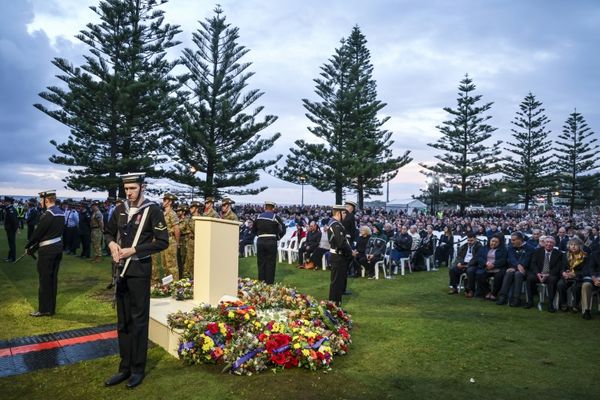A tiny marsupial with a huge two-metre leap has been discovered in a Western Australian wildlife sanctuary.
The red-tailed phascogale, listed as vulnerable under the Environment Protection Act, was once found in woodland areas across the southern half of Australia.
Land clearing and feral pests have constrained remaining populations to the Wheatbelt region of WA, where they are known to bound between branches of native trees.
But scientists at Paruna Wildlife Sanctuary last week spotted one of the marsupials during a routine check of camera traps.
Ecologist Bryony Palmer made the shock finding at the Australian Wildlife Conservancy-run sanctuary, 50 kilometres north-east of Perth in the Avon Valley.
"It's a species that hasn't been seen in this area for several decades at least, and the closest known population is about 100km away to the south-east," Dr Palmer said.
"They have a number of threats, primarily land clearing and feral predators … so to have them turn up on their own at one of our sanctuaries is very exciting."
Red-tailed phascogales are nocturnal, carnivorous marsupials from the same family as the quoll. They are typically found in trees, eating mainly insects, spiders and small birds.
The species, which measures 10 centimetres in length and weighs about 60 grams, can live for up to three years.
Once found in almost every Australian state, Dr Palmer said the phascogales have become extinct from 99 per cent of their former range, which makes this discovery all the more special.
"It indicates that our threat management programs we implement here at Paruna are successful," she said.
Restoring threatened species
An impact report released last week by the Australian Wildlife Conservancy (AWC) found 20 threatened and locally extinct species had been reintroduced into native environments over the past 12 months, including the brush-tailed bettong in the Northern Territory and Mitchell's hopping mouse in New South Wales.
The AWC is a not-for-profit organisation which owns or manages almost 13 million hectares of land nationwide.
AWC ecologist Amanda Bourne said the work was made possible through donations.
"We're fully funded by donations, so we rely heavily on our supporters to do what we do," Dr Bourne said.
"AWC is implementing one of the biggest field-based science programs in the country … it's very satisfying work. You can see some very tangible outcomes in terms of conservation of species."







